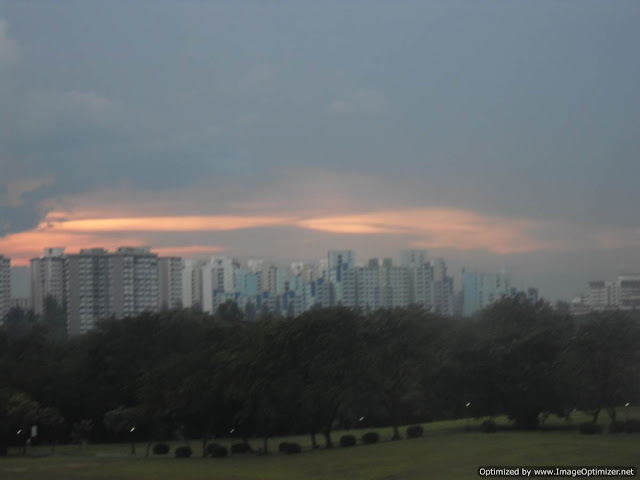Due to the success of Singapore's public housing policy, which begins in the 1960s, 80% of the Singapore's populace live in HDB flats today. Private housing are mainly for higher income earners. Those considering buying a residential property in this island nation have to take into account a variety of factors, we will take a closer look at each in turn in this article.
Reason for purchase
First and foremost, buying a property for investment or owner-occupation makes a difference. Naturally, if it for investment, the chief factor in consideration will be the capital gain. On the other hand, buying for owner-occupation makes capital gain a secondary concern. In this case, more important factors will be the current or future size of the household. A retiree or single may opt for a smaller flat. While a young, married couple may also choose a small flat if their financial means are limited, or a large flat if they are planning to have children and provided if they are rich enough to afford it.Type of housing
The next consideration is the housing type. With the many types available, buyers are often spoil for choice. The below two tables compare the private and public housing segments.
Table 1: Available Housing Types in Singapore
| HDB (99-year lease) | Private Housing (60-*, 99-, 999- year lease; freehold) |
Build-to-Order (BTO)
|
Walk-up ApartmentHigh-rise ApartmentCondominiumShoebox ApartmentSohoStrata Titled Cluster Housing
|
Table 2: Comparison of HDB and Private Housing
HDB
|
Private Housing
|
Eligibility:Direct Purchase from HDB -
(For Executive Condominium ≤
$12,000)Resale -
Most Affordable Type of Housing For Owner-occupation Lower Maintenance Cost (Conservancy Charges) Stringent Restriction for Leasing Out Minimum Occupation Period |
Eligibility:Non-landed -
60-*, 99-, 999- year Lease; Freehold Tend to be More Expensive For Owner-occupation and Investment Higher Maintenance Cost (Property Taxes, Monthly Maintenance Charges, etc.) No Restriction for Leasing Out No Minimum Occupation Period |
To decide which housing type suit the buyer's budget, a commonly used measure of housing affordability is the debt-to-service ratio (DSR), defined as
DSR = Monthly Debt Service / Monthly Gross Household Income
The internationally recognised benchmark for housing affordability is a DSR of 30 per cent. For example, based on a household with a monthly income of S$3,000 buying a S$300,000 3-room HDB flat, with no housing grants, the household can take a loan of up 80 per cent of the price (assuming that they have no outstanding mortgage loan), or S$240,000. Given an annual interest rate of 2 per cent, based on a 30-year loan, the monthly installment incurred will be about S$887. This works out to a DSR of roughly 30%, which still falls within the affordable range.
Another widely used affordability measure divides the price of a home by a potential buyer’s annual income.
Nevertheless, these two measures are only short-term measures as buyers' income may change over time.
To overcome this issue, a long-term measure of housing affordability was developed by Prof Abeysinghe of the National University of Singapore, to find out more about this measure go here. When deciding between a HDB and private property, besides the affordability, buyers may also want to look at the investment potential of the houses.
HDB flats' investment potential
From the Government's standpoint, HDB flats are meant for living purposes and not for speculation. Hence HDB flats are subjected to a Minimum Occupation Period (MOP) of 5 years whether for a resale or direct purchase from HDB. This curbs house flipping of HDB flats.Nevertheless after MOP, owners of larger HDB flats can make a profit by downgrading to a smaller unit. Those who are tempted to sell for a profit during a booming property market may not be better off as they will have to pay a high price for another flat. Moreover, if their current flat was bought with a housing grant, they will have to incur a resale levy when they buy a second subsidised HDB flat.
However, some Singaporeans are still profiteering from renting out their HDB flats. Under current regulations, owners of subsidised or non-subsidised HDB flats have to meet the requirement of a 5-year MOP before they are allowed to rent out their flats. Exceptions are made for owners who live overseas.
Furthermore, there are restrictions on the rental periods. For Singaporean owners they could rent out their flats for a period of 3 years after which they could request for extensions with no cap on the number of requests. For PRs, however, it is a different story. They are only allowed to rent out for a period of a year, subject to discretionary extensions, with a limit of 5 years on the total rental years allowed.
Private housing's investment potential
In contrast, the rental rules for private properties are less stringent. Of note is that Singaporeans are not allowed to own HDB flats and private homes concurrently within the MOP. After the MOP, Singaporeans often make a profit by living in HDB flats while renting out their private properties.However, for adventurous homeowners who are looking at flipping private properties to increase their wealth, they are restricted by the string of anti-speculative measures instituted by the Government since 2009.
Properties acquired after 20 February 2010, are subjected to a Sellers' Stamp Duty of 4% to 16% of the selling price or market value, whichever is higher , if they are disposed of within 1 to 4 years after purchase.
In addition, for property purchases after 8 December 2011, an additional Buyer's Stamp Duty of 3% is imposed on Singapore citizens buying their third and subsequent properties. For PRs, the 3% will be imposed on their second and subsequent purchases, instead.
Read more articles at
PropertyBuyer.com.sg/articles
SingaporeHomeLoan.net/blog/
iCompareLoan.com/resources/category/faq/






